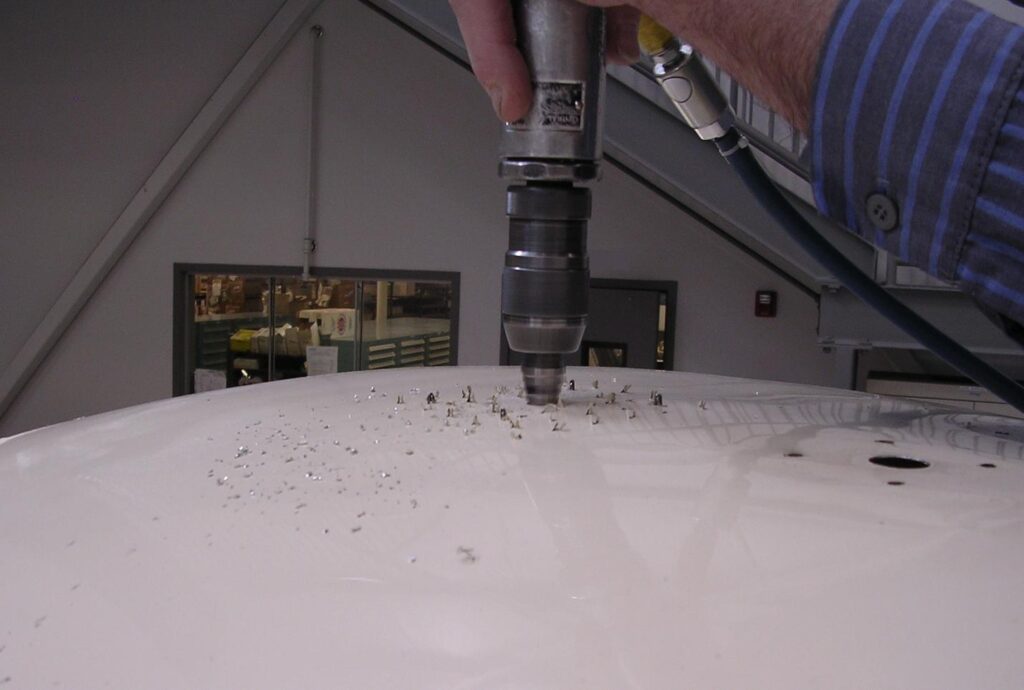Antenna Doublers
Fliegen Works will preform antenna doubler design and DER approval for your avionics upgrade or documentation of prior alterations.
We have done many antenna and bulkhead doublers on pressurized aircraft and helicopters. If you have a new antenna to install as part of an avionics package, or find that an aircraft’s logbooks do not have an FAA approved antenna installation, we can help. We have a library of antenna data and aircraft data that help with turn around time. Most pressurized cabin penetrations can have a reinforcing doubler designed in a day or two. Any penetration through the pressurized fuselage of an aircraft requires an FAA approved structural analysis for the hole. AC 43.13 has a good section on sheet metal repairs with calculating rivets for a doubler, although the FAA does not accept this for an antenna installation or a bulkhead pass-through in a pressurized aircraft.
If you have an antenna to install in a pressurized aircraft and need your installation DER approved, here is the process we use and things to consider with a new antenna installation.
- Location On Aircraft – usually the avionics using the antenna have specific requirements for segregation from other antenna. After those conditions have been met, the choices on the fuselage should be evaluated for access, structure, and aerodynamics. Access is obvious – you need to get your cables to the desired location. Next, there are locations to avoid, such as next to large doors in the cabin, and near the spars and wing carry through. Some aircraft fuselages have different skin thicknesses; if possible, choose a skin location that is .040 inches thick. (Thinner skins and thicker skins usually require more rivets.) Clean bays are always easier, but reusing an old antenna location is often preferred. Aerodynamics of antenna installations are usually not an issue on planes that go less than Mach 6. For faster aircraft, avoid locations near the last half of the wing and on fuselage mounted engines avoid the area near the engines. Large antenna may affect other aerodynamics and require special evaluation.
- Data required – Call us for the data required for your antenna or bulkhead doubler.
